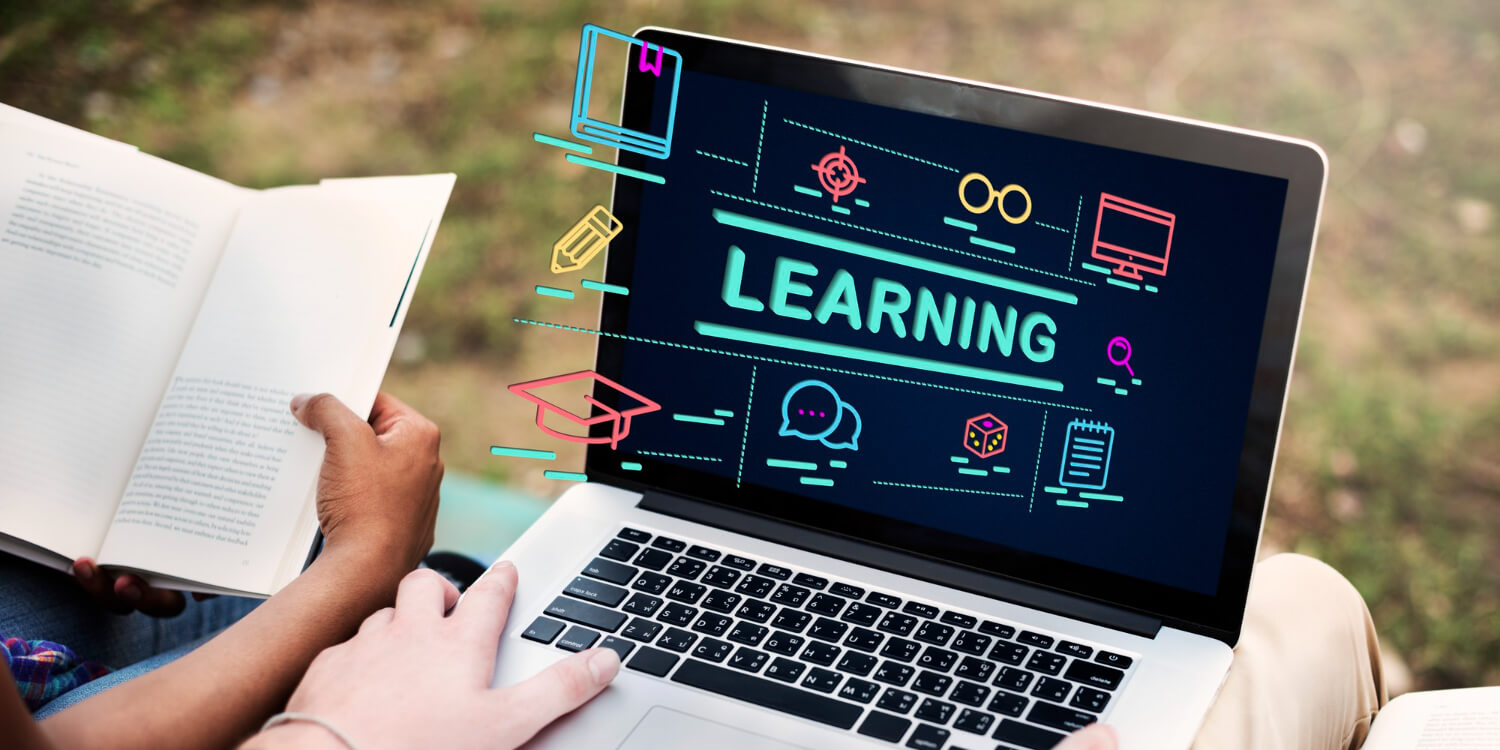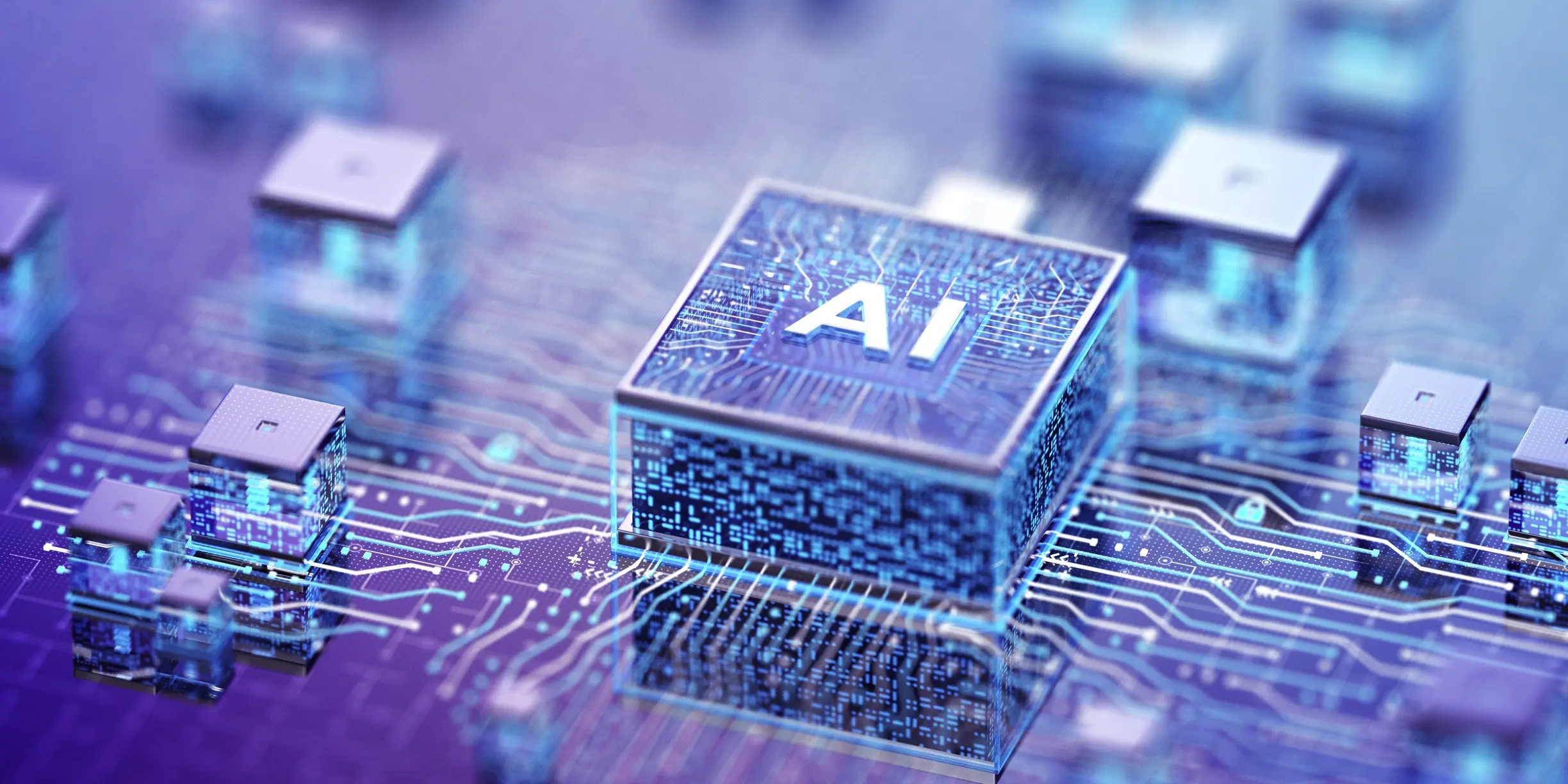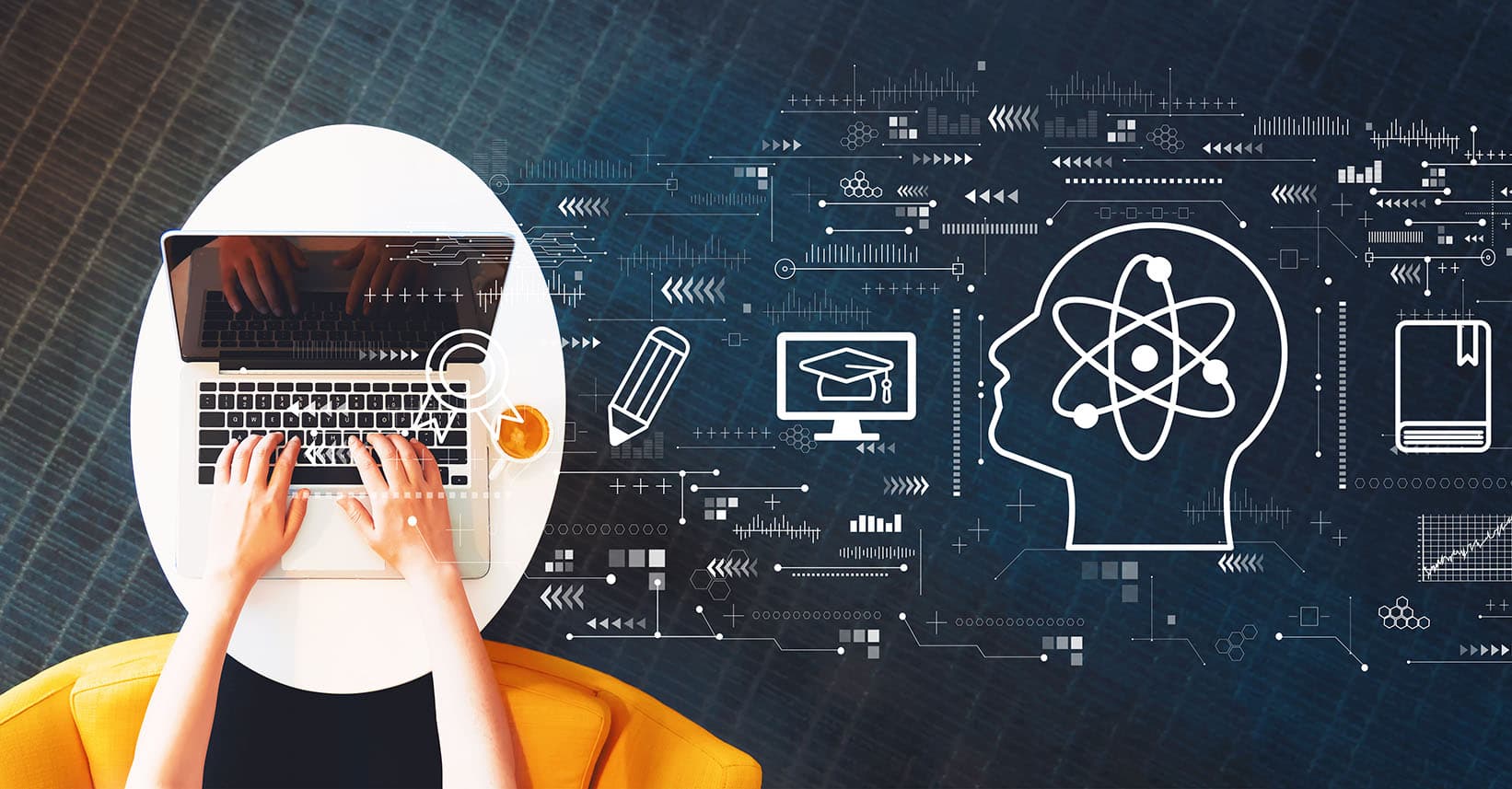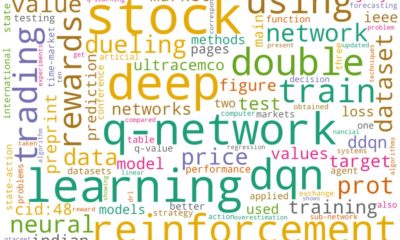Tech
The Digital Classroom Revolution: How Technology Is Transforming Education

Education is no longer confined to classrooms, textbooks, and chalkboards. The rise of digital technology has revolutionized how we teach, learn, and connect. From artificial intelligence to immersive virtual environments, education is undergoing the most significant transformation in its history — creating what many call the Digital Classroom Revolution.
This fusion of technology and education is reshaping not only how knowledge is delivered but also how it’s absorbed, personalized, and applied in the real world.
1. From Traditional Learning to Digital Transformation
For centuries, education relied on face-to-face instruction, paper textbooks, and standardized teaching methods. While effective for its time, this system often lacked flexibility and personalization.
Then came the digital era. Internet access, smartphones, and cloud computing democratized information. Suddenly, anyone with an internet connection could access global knowledge, take online courses, and earn degrees remotely.
The traditional classroom has expanded into a global digital ecosystem, where learning happens anytime, anywhere — from virtual campuses to mobile apps.
2. E-Learning and the Rise of Online Education
Online education, once viewed as a supplement, is now a central part of modern learning. Massive Open Online Courses (MOOCs) such as Coursera, edX, and Udemy offer thousands of courses from top universities and institutions at affordable prices — or even for free.
Students can now study coding at MIT, marketing at Google, or psychology at Yale, all from the comfort of their homes.
The advantages of e-learning include:
-
Accessibility: Breaking down geographic and financial barriers.
-
Flexibility: Learning at one’s own pace and schedule.
-
Scalability: Institutions can teach thousands of students simultaneously.
-
Interactivity: Quizzes, videos, and forums enhance engagement.
What began as an emergency measure during the COVID-19 pandemic has matured into a permanent model that complements traditional education.

3. Artificial Intelligence: Personalizing the Learning Experience
Artificial intelligence (AI) has become a cornerstone of modern education. It allows for personalized learning, where algorithms adapt content to each student’s needs, strengths, and progress.
For instance, platforms like Duolingo use AI to adjust language difficulty based on user performance. Similarly, AI tutors provide instant feedback, helping learners grasp complex topics faster.
In classrooms, AI can analyze test results to identify learning gaps, suggest additional materials, and even predict when students might need intervention.
This data-driven approach makes education more efficient and equitable — ensuring that no student is left behind.
4. Virtual Reality (VR) and Augmented Reality (AR): Learning by Immersion
Imagine exploring ancient Rome in 3D, performing virtual surgery, or walking through the solar system — all without leaving the classroom.
That’s the power of Virtual Reality (VR) and Augmented Reality (AR) in education. These immersive technologies turn abstract concepts into tangible experiences, making learning more engaging and memorable.
Examples include:
-
Medical students practicing procedures in virtual environments.
-
History classes using VR tours to explore historical landmarks.
-
Science lessons visualizing molecules or physics simulations in 3D.
Studies show that immersive learning improves knowledge retention and increases student motivation. As VR headsets become more affordable, this form of experiential learning is becoming mainstream.
5. Gamification: Making Learning Fun Again
Gamification — the integration of game elements into non-gaming environments — has become a powerful motivator in education.
Badges, points, leaderboards, and challenges turn lessons into interactive experiences. Platforms like Kahoot!, Quizizz, and Classcraft transform quizzes and lessons into games that stimulate curiosity and competition.
This approach doesn’t just make learning fun; it also boosts engagement, collaboration, and persistence — especially among younger students.
When students are rewarded for progress rather than punished for failure, they develop a growth mindset, fostering lifelong learning habits.
6. Cloud Computing: The Backbone of Modern Learning
Cloud technology enables schools and universities to store, share, and collaborate on educational resources effortlessly. Tools like Google Workspace for Education, Microsoft Teams, and Zoom have become essential for online classes, document sharing, and group projects.
Cloud platforms ensure that students and teachers can access materials from any device, at any time, fostering continuity in both remote and hybrid learning models.
Additionally, cloud systems support data security, automatic updates, and reduced operational costs for institutions — making education more scalable and sustainable.
7. The Internet of Things (IoT) in Smart Campuses
The Internet of Things (IoT) is also reshaping education. Smart devices such as interactive whiteboards, connected sensors, and digital attendance systems enhance both teaching and campus management.
In “smart classrooms,” IoT devices can:
-
Adjust lighting and temperature for optimal learning conditions.
-
Track student participation through wearables.
-
Provide real-time performance analytics to teachers.
At the institutional level, smart campuses use IoT for energy management, safety systems, and digital navigation — creating efficient, tech-driven learning environments.
8. Data Analytics: Measuring Success Through Insights
Education is now driven by data. Learning analytics allows educators to measure engagement, retention, and performance across digital platforms.
By analyzing this data, institutions can identify which courses are most effective, where students struggle, and how teaching methods can improve.
For example, predictive analytics can warn when a student is at risk of dropping out, enabling timely intervention. Similarly, administrators can use data to optimize resource allocation, course design, and academic outcomes.
In short, data transforms intuition into informed decision-making.
9. Challenges in the Tech-Education Ecosystem
Despite its benefits, technology in education faces significant challenges.
-
The digital divide: Not all students have equal access to devices or reliable internet. This gap disproportionately affects rural and low-income communities.
-
Privacy concerns: The vast amount of data collected raises ethical questions about student privacy and data ownership.
-
Teacher training: Educators must continuously adapt to new tools, often without adequate support or time.
-
Overreliance on technology: Excessive screen time and automation can reduce human interaction, creativity, and critical thinking.
Balancing innovation with equity, privacy, and well-being remains a top priority for educators and policymakers alike.

10. The Future of Tech in Education
The future of education will be defined by blended learning — a model combining in-person interaction with digital flexibility. AI tutors, VR classrooms, and adaptive e-learning will coexist with traditional teaching to create a holistic system tailored to each learner.
Emerging trends include:
-
Blockchain credentials: Secure, verifiable digital certificates for diplomas and achievements.
-
Microlearning: Bite-sized lessons that cater to short attention spans and busy schedules.
-
AI-driven career guidance: Personalized education paths aligned with future job markets.
-
Global collaboration: Virtual classrooms connecting students from different cultures.
Education is becoming borderless, personalized, and continuous — preparing learners not just for exams, but for life in a constantly changing digital world.
Conclusion
Technology has redefined education in profound ways. What was once limited by walls and geography is now an open, dynamic, and global system. Learners have become creators, teachers have become facilitators, and classrooms have evolved into interactive ecosystems.
As we move deeper into the 21st century, the fusion of technology and education promises to unlock human potential like never before. The key will be ensuring that these tools serve not just efficiency, but equity, creativity, and empowerment.
The future classroom is already here — it’s digital, connected, and designed for everyone.
Tech
The Future of Tech in Education: Shaping Learning in the Digital Age

Technology and education have always been interconnected, but in the past two decades, their relationship has evolved into something far more transformative. From digital classrooms and online learning platforms to artificial intelligence (AI)-powered tutoring and virtual reality (VR) simulations, technology is reshaping how knowledge is delivered, accessed, and retained. What was once supplemental—like using a projector or basic computer lab—has now become central to the learning experience.
This article explores how technology is revolutionizing education, the benefits and challenges it brings, and the emerging trends that promise to redefine the future of learning.
The Evolution of Technology in Education
The integration of technology into education is not new. In the early 2000s, schools began adopting computer labs and internet access, giving students new ways to conduct research and complete assignments. The rise of smartboards and projectors replaced chalkboards in many classrooms, and laptops gradually became essential learning tools.
However, the real shift occurred with the explosion of digital learning platforms and mobile technology. The rise of e-learning portals like Khan Academy, Coursera, and Udemy allowed students to learn anytime, anywhere. The COVID-19 pandemic accelerated this trend further, as schools and universities worldwide transitioned rapidly to online and hybrid learning models.
Today, technology is no longer just an aid—it is the backbone of modern education.
Benefits of Technology in Education
1. Accessibility and Inclusivity
Technology has opened the doors of education to millions who previously lacked access. Online platforms enable students from rural areas, developing countries, or underserved communities to access world-class resources. Tools like screen readers, voice-to-text software, and adaptive learning systems also ensure inclusivity for students with disabilities.
2. Personalized Learning
AI-driven platforms can analyze a student’s strengths and weaknesses, tailoring lessons to their individual learning pace. This level of customization is nearly impossible in traditional classrooms with a single teacher managing dozens of students. Personalized learning empowers students to progress at their own speed, improving retention and motivation.

3. Engagement Through Interactivity
Gamification, VR, and augmented reality (AR) have made learning more engaging. For example, history students can take a virtual tour of ancient Rome, while biology students can explore 3D models of the human body. This hands-on, immersive approach deepens understanding and makes learning enjoyable.
4. Global Collaboration
Technology breaks down geographical barriers. Students can participate in global classrooms, work on international projects, and exchange ideas with peers from different cultures. This global perspective fosters diversity, empathy, and collaboration—essential skills in today’s interconnected world.
5. Lifelong Learning Opportunities
Education is no longer confined to the school years. Adults can reskill or upskill through online programs at any age. Platforms offering micro-credentials, online certificates, and virtual boot camps make continuous learning a reality, which is vital in an economy where jobs evolve rapidly.
Challenges of Tech in Education
While the benefits are undeniable, challenges remain in ensuring technology fulfills its promise in education.
-
Digital Divide
Not all students have equal access to devices or reliable internet. This inequality, known as the digital divide, was especially visible during the COVID-19 lockdowns when millions of children struggled to attend online classes. Bridging this gap is a critical priority. -
Over-Reliance on Technology
While technology enhances learning, overuse can reduce critical thinking, creativity, and interpersonal communication skills. Striking the right balance between digital tools and traditional teaching is essential. -
Data Privacy and Security
With so much data being collected by educational platforms, privacy and security concerns arise. Protecting student information must be a top priority to prevent misuse. -
Teacher Training and Adaptation
Many educators struggle with adopting new technologies. Without proper training and support, digital tools can overwhelm teachers instead of empowering them. Professional development is key to making technology work effectively in classrooms.
Emerging Trends in Tech-Driven Education
1. Artificial Intelligence (AI) Tutors
AI-powered tutoring systems provide real-time feedback, grade assignments, and even predict student outcomes. They can act as personal assistants, helping students grasp complex concepts outside classroom hours.
2. Virtual and Augmented Reality (VR/AR)
Immersive technologies are revolutionizing experiential learning. Medical students can practice surgeries in VR, engineering students can simulate construction projects, and language learners can interact in virtual environments. These tools provide practical skills without real-world risks.
3. Learning Analytics
Educational institutions are increasingly using big data to analyze student performance. This helps teachers identify struggling students early, adjust teaching strategies, and improve overall outcomes.
4. Gamification of Learning
Incorporating game elements such as rewards, leaderboards, and challenges motivates students. Popular apps like Duolingo show how gamification makes learning languages more fun and addictive.
5. Blockchain in Education
Blockchain is being explored for secure credentialing and certification. With blockchain, academic records can be stored permanently and verified globally, reducing fraud and simplifying hiring processes.
6. Hybrid and Microlearning Models
Blended learning (a mix of online and in-person) and microlearning (bite-sized lessons) are gaining popularity. They adapt to modern lifestyles where flexibility and efficiency are valued.
The Future of Tech in Education
Looking ahead, education will likely become more decentralized and flexible. Traditional universities may evolve into hybrid hubs, offering both physical campuses and global online classrooms. Certifications and skill-based learning may gain equal recognition alongside traditional degrees, especially as employers prioritize practical expertise over formal credentials.
Moreover, the focus will shift from rote memorization to skills like critical thinking, problem-solving, digital literacy, and adaptability. Technology will serve not as a replacement for teachers but as an enhancer of human connection and creativity in learning environments.
Sustainability will also become central. With climate change concerns, educational technology must focus on energy-efficient platforms and responsible usage. At the same time, students will need education in digital ethics, ensuring they understand the social and moral implications of technology.

Conclusion
Technology has moved from being a supplementary classroom tool to becoming the driving force behind education’s evolution. By increasing accessibility, personalizing learning, and fostering engagement, it has opened opportunities that were once unimaginable. However, challenges like the digital divide, teacher training, and data privacy must be addressed to ensure equal access and ethical use.
As the digital age progresses, the future of education lies in creating a harmonious balance—leveraging technology’s power while preserving the irreplaceable human elements of teaching: empathy, mentorship, and inspiration. If guided thoughtfully, the fusion of tech and education promises not just smarter students, but a more informed, connected, and innovative society.
Tech
A Beginner’s Guide to Smart Home Setup

Ever dreamed of controlling your home with just a tap or a voice command? Welcome to the world of smart home technology! From increasing convenience to improved energy efficiency and boosting your home’s security, smart tech is revolutionizing how we live. Whether it’s adjusting the thermostat remotely or automating your lights, the possibilities are endless.
If you’re feeling overwhelmed by where to start, don’t worry—we’ve got you covered. This guide will walk you through the basics of smart home setup, making it easy for beginners to create a system that suits their lifestyle and budget. By the end, you’ll be ready to transform your everyday routine with cutting-edge technology. Get ready to enjoy more comfort, control, and peace of mind in your home! And while you’re optimizing your home life, why not optimize your digital skills too? Check out our guide on Mastering Excel’s Hidden Power with Volatile Functions to level up your productivity.

What are the Benefits of Smart Home Technology?
Smart home technology is transforming how we live by making our homes more convenient, efficient, and secure. With features like remote control and automation, managing daily tasks has never been easier. Imagine adjusting your thermostat, locking doors, or turning off lights with just a tap or voice command.
One major advantage is energy efficiency. Smart devices like programmable thermostats and smart plugs help you monitor and reduce energy use, which can lead to lower bills and a greener lifestyle. Additionally, smart security systems, including cameras and motion sensors, provide peace of mind by protecting your home and loved ones 24/7.
Customization is another highlight. From setting up mood lighting for a movie night to automating morning coffee, smart tech adapts to your routines and preferences. It provides personalized solutions that make life easy and enjoyable.
Ultimately, smart home technology offers more control, saves time, and improves everyday comfort. Whether you’re upgrading one device or creating a fully connected system, the benefits are sure to improve your daily life.
Top Tips for Optimizing Your Smart Home Setup
Maximizing your smart home’s potential starts with a few simple strategies. First, focus on device placement. Put smart speakers and hubs in central areas to ensure better connectivity and voice recognition. Sensors, cameras, and thermostats work best when positioned for maximum coverage and accessibility.
Connectivity is key. Ensure your Wi-Fi network can handle the demands of multiple devices. Invest in a mesh Wi-Fi system if needed to eliminate dead zones and maintain smooth performance throughout your home. Reliable connections are the backbone of an effective smart home setup.
Next, take advantage of automation routines. Schedule lights to turn on at sunset, or set your coffee maker to brew each morning. These routines bring convenience and efficiency to your daily life while allowing devices to work in sync.
Finally, don’t overlook regular updates. Keep your devices and app firmware updated to improve security, fix bugs, and gain new features. A well-maintained system runs more smoothly and provides a better experience.
By fine-tuning placement, connectivity, automation, and updates, you’ll enjoy a smarter, more efficient home!
How Does Smart Home Technology Enhance Home Security?
Smart home technology is a game-changer for home security, offering innovative ways to protect your property and loved ones. Devices like smart cameras and motion sensors provide real-time surveillance, allowing you to monitor your home from anywhere through your smartphone or tablet. Some cameras even include facial recognition and night vision, giving you added layers of security.
Smart locks are another key feature, enabling you to lock and unlock doors remotely. This means you can ensure your home is secure, even if you’re not there. You can also create unique passcodes for family members or guests, eliminating the need for physical keys.
One of the most powerful advantages is real-time alerts. Whether it’s unusual activity on your security camera or a window sensor being triggered, you’ll receive instant notifications, so you can act fast. Plus, these systems often connect with other devices like alarms or smart lights, creating a coordinated security network.
By providing greater control, remote access, and advanced features, smart home technology makes it easier than ever to safeguard your home and gain peace of mind.
Conclusion
Smart home technology brings convenience, energy savings, and improved security to your everyday life. With the right devices and setup tips, creating a smart home is simpler than you think. Start small, explore your options, and enjoy the benefits of a home that works smarter for you. The future is yours to explore! For more insights on the latest in innovation, don’t miss our collection of tech articles designed to keep you informed and ahead of the curve.
Tech
How Technology Is Revolutionizing Education: The Rise of Digital Learning

Education has always been the foundation of human progress. From ancient scholars gathering in courtyards to modern classrooms filled with eager learners, the pursuit of knowledge has shaped societies and economies across centuries. But in the 21st century, the classroom is no longer confined by walls, textbooks, or even geography. The rise of technology has transformed education into a dynamic, digital experience — one that’s more accessible, personalized, and global than ever before.
Technology in education is not just a trend; it’s a revolution. It’s changing how we teach, how we learn, and even how we define education itself.
The Digital Shift: From Chalkboards to Cloud Learning
A few decades ago, education was largely a one-way process. Teachers lectured, students listened, and information flowed in one direction. Learning was confined to physical spaces, limited by time and resources. Today, technology has dismantled those barriers.
The introduction of digital tools, online platforms, and mobile connectivity has turned learning into a flexible, interactive, and global experience. Platforms like Google Classroom, Coursera, and Khan Academy provide access to world-class education from anywhere. Students can take a programming class from Stanford, learn design from professionals in Europe, or attend live virtual tutoring sessions — all from their living rooms.
The COVID-19 pandemic accelerated this transformation. With schools and universities forced to close their doors, digital learning became not just an option but a necessity. Overnight, teachers adopted virtual classrooms, and students learned to navigate video calls, cloud assignments, and digital collaboration tools. This massive shift demonstrated not only the adaptability of education but also the power of technology to keep learning alive during global disruption.
The Benefits of Technology in Education
The impact of technology on education goes far beyond convenience. It has introduced new possibilities that make learning more personalized, engaging, and inclusive.
1. Personalized Learning Paths
Every student learns differently. Some grasp concepts quickly, while others need more time or alternative approaches. Traditional education often struggles to accommodate these differences. Technology, however, allows for adaptive learning — systems that adjust content based on individual performance.
Platforms like DreamBox and Smart Sparrow use data analytics and artificial intelligence (AI) to track student progress and customize lessons accordingly. A student struggling with algebra, for example, receives targeted exercises, while another can move ahead to more advanced topics. This personalized approach boosts confidence and improves learning outcomes.
2. Global Access to Knowledge
Before the digital era, quality education often depended on location or financial means. Today, open educational resources (OER), massive open online courses (MOOCs), and video lectures have democratized learning.
A student in a rural village can access the same materials as one in a major city. Platforms like edX, Udemy, and FutureLearn bring world-class educators to learners across continents. This global access has the potential to reduce educational inequality and empower millions who previously lacked access to traditional institutions.

3. Interactive and Engaging Learning
Modern education technology (EdTech) has made learning more immersive and interactive. Tools like virtual reality (VR), augmented reality (AR), and gamified learning turn lessons into experiences.
Imagine learning about ancient Rome by walking through a virtual reconstruction of the Colosseum, or studying human anatomy using 3D AR models. These technologies enhance understanding and retention by engaging multiple senses and encouraging active participation.
Gamification — incorporating elements like points, levels, and badges — adds motivation and fun to learning. Apps such as Duolingo or Kahoot! have proven that when education feels like a game, engagement and consistency soar.
4. Collaboration and Communication
Technology has made education more collaborative than ever. Students can now work on group projects through shared documents, participate in real-time discussions, and exchange ideas with peers from around the world.
Virtual classrooms mimic traditional learning environments but add digital flexibility. Tools like Microsoft Teams, Zoom, and Slack create virtual communities where students can communicate, share feedback, and work together — essential skills for the modern workforce.
5. Preparing for the Future Workforce
Technology-driven education doesn’t just teach students content — it prepares them for a future defined by digital skills. Coding, data analysis, artificial intelligence, and digital literacy are now essential competencies in almost every career field.
Educational systems that integrate these subjects early on equip students with the tools to thrive in the Fourth Industrial Revolution, where automation and innovation redefine industries.
Challenges of Tech-Driven Education
While technology offers immense opportunities, it also presents new challenges that educators and policymakers must address.
1. The Digital Divide
Not every student has access to the internet or digital devices. This “digital divide” remains one of the biggest obstacles to equal education. In low-income areas or developing countries, unreliable connectivity and lack of resources can exclude millions from online learning opportunities.
Governments and organizations are now working to bridge this gap by investing in broadband infrastructure, affordable devices, and community learning centers.
2. Screen Fatigue and Overreliance on Tech
Spending too much time in front of screens can lead to fatigue, distraction, and reduced focus. The balance between digital and offline learning is crucial. Educators are exploring hybrid models that combine the efficiency of technology with the human connection of traditional teaching.
3. Data Privacy and Security
With more learning taking place online, protecting students’ data is essential. Schools and platforms must implement strong cybersecurity measures to safeguard personal information. Transparent policies and digital ethics education are becoming vital components of tech-integrated learning environments.
4. Teacher Training and Adaptation
Technology is only as effective as the people using it. Many educators face challenges adapting to new digital tools or integrating them meaningfully into their teaching methods. Ongoing professional development and support are crucial for teachers to harness technology’s full potential.
The Future of Tech in Education
The next wave of innovation promises to make learning even more intelligent, immersive, and inclusive.
Artificial Intelligence (AI)
AI will continue to drive personalized learning by analyzing student data to predict needs and optimize outcomes. Intelligent tutoring systems can provide instant feedback, freeing teachers to focus on creativity and mentorship.
Virtual Reality (VR) and Augmented Reality (AR)
As VR and AR become more affordable, virtual field trips and hands-on simulations will become routine in classrooms. These technologies can make abstract concepts tangible — from exploring outer space to dissecting digital organisms.
Blockchain in Education
Blockchain technology can revolutionize record-keeping and credential verification. Students will have secure, verifiable digital diplomas, making academic achievements portable and tamper-proof.
Lifelong Learning and Micro-Credentials
The traditional path of schooling followed by a career is fading. In its place, a culture of lifelong learning is emerging. Professionals are continuously upgrading their skills through online courses and micro-credentials — short, focused programs that provide targeted expertise.
This trend reflects the new reality: education is no longer a phase of life but a continuous journey.

Conclusion
Technology has forever changed the landscape of education. It has broken barriers of geography and privilege, turned classrooms into interactive environments, and empowered learners to take control of their education.
But at its core, education remains about connection — between teachers and students, knowledge and curiosity, ideas and action. Technology is simply the bridge that makes those connections faster, broader, and more accessible.
As we look toward the future, the challenge will not be whether we can integrate technology into education — but how we can do so wisely, inclusively, and creatively. The goal is not to replace teachers or classrooms but to enhance them, creating a world where learning truly has no limits.
In the digital age, knowledge is everywhere — and for those ready to learn, the classroom is the world itself.
-

 Education1 year ago
Education1 year agoExcel Sunburst Chart
-

 Education2 years ago
Education2 years agoFix Microsoft Excel Error – PivotTable Field Name Is Not Valid
-

 Excel for Business1 year ago
Excel for Business1 year agoInteractive Excel KPI Dashboard
-

 Education1 year ago
Education1 year agoPositive Negative Bar Chart
-

 Education2 years ago
Education2 years agoExcel Gantt Chart (Conditional Formatting)
-

 Education1 year ago
Education1 year agoWord Cloud Generators: The Modern Tool for Simplifying Data Visualization
-

 Excel for Business2 years ago
Excel for Business2 years agoMastering Chart Elements in Excel to Unlock Better Data Visualization
-

 Education2 years ago
Education2 years agoStreamlining Election Vote Counting with an Excel Election Template

